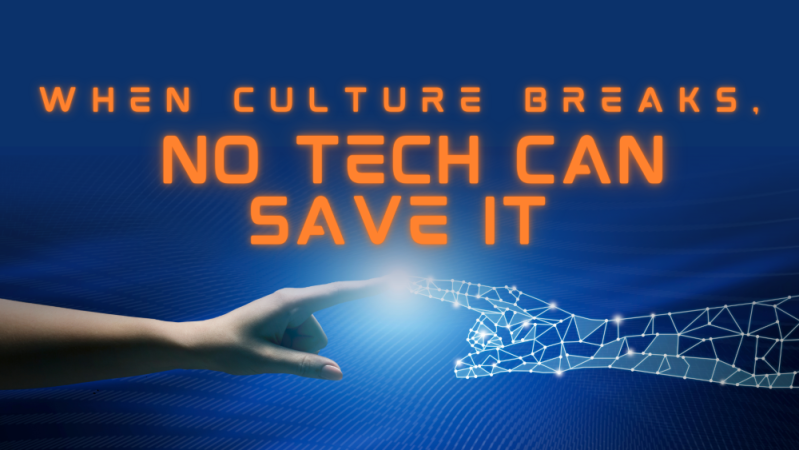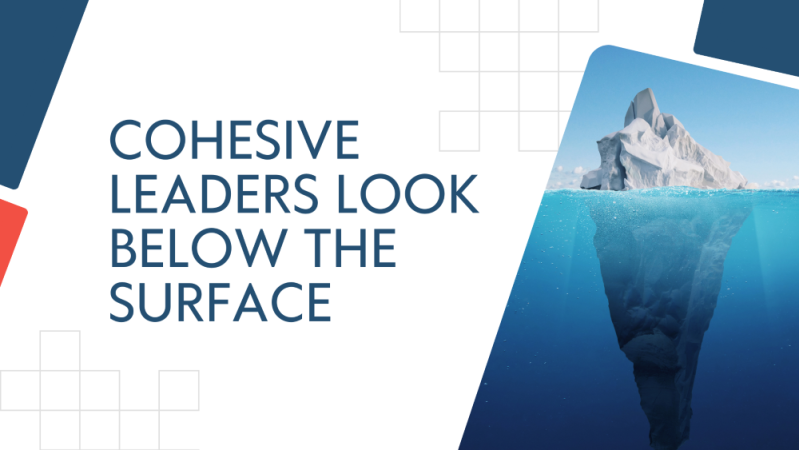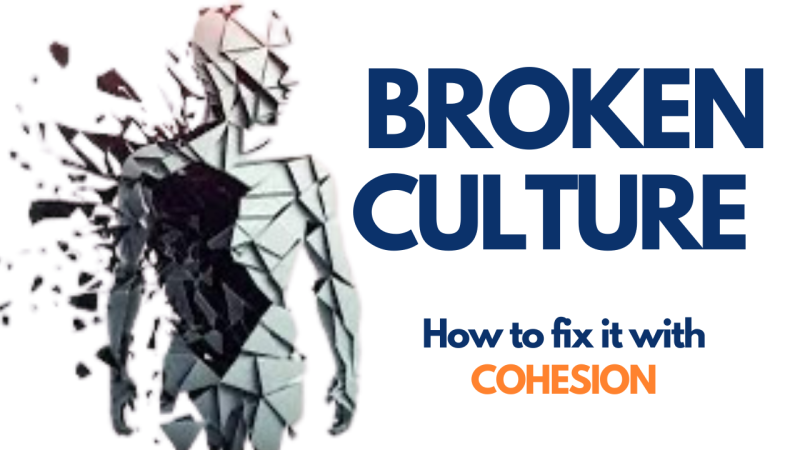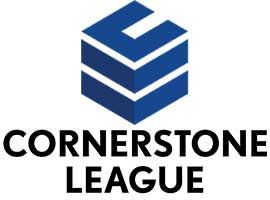Articles on Culture
Providing Practical Leadership Advice

Busy Up or Busy Down: You're in Charge of Your Own Career
"You need to act like the career you want, not the job you have."
That phrase came to mind when I was working with my friend and colleague Diane Abbonizioof United Bay Community Credit Union®. We were discussing a potential role play scenario for a leadership development program involving an employee who is frustrated because they weren’t seeing opportunities for advancement.
The problem wasn’t a lack of work ethic. They were busy all the time. The real question was: Busy doing what?
The Busy Trap
It’s easy to confuse activity with progress. Many people pride themselves on being busy — calendars full, inboxes overflowing, constantly putting out fires. It feels productive. It feels important.
But the truth is being busy isn’t the same as moving forward.
Some people are stuck in the Busy Trap, doing work that keeps them comfortable but not capable. They’re answering every email, jumping into every issue, and solving every problem… often the ones their team should be handling. It’s work that keeps them visible in the moment but invisible when opportunities for advancement come around.

The First Ever Cohesion Culture™ Day: A Movement Begins
October 15, 2025 is a day of double celebration and a defining moment for connection and culture.
🎉 First, we celebrate the inaugural Cohesion Culture™ Day, officially recognized by the state of South Carolina.
🎯 Second, we launch our newest book, The Cohesive Sales Approach, a fresh take on selling that puts connection before the close.
Both milestones share the same heartbeat: belonging, value, and mutual commitment.

You can’t AI your way out of a toxic culture.
Innovation is the shiny object every organizational leader wants to wave around.
But what happens when leaders confuse technological progress with cultural progress?
Case in point: AT&T’s CEO, John Stankey. His 2,500-word memo recently went viral, not for its vision of the future but for its conditions of belonging. The message to employees was clear:
- You’ll get tools, structure, and opportunity.
- But don’t expect loyalty, flexibility, or advancement without constant proof of value.
- And if that doesn’t work for you, maybe you’re in the wrong place.
This directive signals a bigger problem... some leaders are betting they can adopt artificial intelligence while ignoring the real intelligence that drives culture. The people.

Don’t Punish the Many for the Actions of the Few
Have you ever seen a leader react to one person’s mistake by rewriting the entire rulebook?
Suddenly everyone has to follow a new process, add an extra approval step, or jump through hoops that didn’t exist yesterday. The team gets frustrated, productivity slows, and resentment grows... not because the process was broken, but because one person didn’t hold up their end.
That’s the leadership equivalent of staring at the tip of an iceberg. What you see above the surface feels like the problem, but the real mass lies hidden below. When leaders only react to what’s visible, they miss the root cause and make everyone suffer for what is often a single behavioral issue.
Avoid creating new processes instead of dealing with underperforming behaviors.
Cohesive leaders know the difference between a process problem and a people problem, and they have the courage to address what’s really below the surface.

Now, what do I do?
Do you ever feel disconnected at work?
You're trying to be professional. Stay focused. Show up as a good teammate. But then...
- Your emails go unanswered.
- A colleague pulls you aside to spill gossip.
- You’re blindsided by a poor performance review.
Now, what do you do?
It's easy to feel unsure in moments like these, especially if it's the first time you've had to deal with this in the workplace. So, I turned to C.A.R.L. (the Cohesive Artificial Response Leader) for guidance on navigating some of these uncomfortable scenarios.
Here's what C.A.R.L. had to say.

It’s Not About Where They Work. It’s About How You Lead.
Let’s get this out of the way... I don’t care whether your organization offers remote work or not.
But if you do, stop calling it Work From Home.
It’s outdated, it’s inaccurate, and frankly, it’s insulting.
That phrase still drags around the myth that remote employees are less productive, more interested in wearing pajamas all day, and probably folding laundry or walking the dog while they pretend to work.

Would you take a pay cut?
Would you take a pay cut right now?
For most American workers, the answer is a firm “nope.” But dig a little deeper, and the story gets more interesting.
According to LinkedIn’s latest Workforce Confidence Survey, more than four in 10 job seekers say they would consider a salary reduction IF it meant better alignment with their values, more room to grow, or increased flexibility.
In other words, money isn’t everything.

Building Cohesion in Remote and Hybrid Teams
Remote and hybrid work are the new normal. Recent studies indicate that UK workers, for instance, average 1.8 remote workdays per week, surpassing the global average of 1.3 days. In the U.S., similar patterns emerge, with a significant portion of the workforce embracing flexible work arrangements. (The Guardian)
However, this shift brings its own set of challenges. A survey revealed that 25% of remote employees experience daily loneliness, compared to 16% of fully onsite employees. Moreover, remote workers are 98% more likely to report severe work loneliness than their in-office counterparts, according to Ringover's 2024 Loneliness at Work survey.
So, how can leaders ensure their remote and hybrid teams remain cohesive and engaged?

The New Rules of Team Cohesion and Innovation
In a Cohesion Culture™, every team member must feel a sense of belonging, value, and mutual commitment.
BUT that doesn’t mean standing still.
Adapting to emerging technologies like AI is now part of being truly “included”. Because no one gets left behind when everyone is learning forward.
Recently, the CEO of Shopify, Tobias Lütke, shared how Artificial Intelligence is changing the way they work. Lütke has set the expectation that every single person at Shopify, including leadership, must embrace AI deeply and immediately. He laid down a clear, no-nonsense challenge for every person in every position: AI is no longer optional. It's a core skill. Learn it. Use it. Share it.
As essential as knowing how to send an email is to holding a job at Shopify, you must equally be able to utilize emerging AI technologies.

How to Handle Toxicity in the Workplace According to C.A.R.L.
Toxicity in the workplace is like an invisible weight dragging down morale, productivity, and retention.
Many employees find themselves working in environments where toxic behaviors thrive, unsure of how to navigate or challenge them.
So, I asked C.A.R.L., the Cohesive Artificial Responder Leader, for insight on handling toxicity effectively.
Here’s what C.A.R.L. had to say:
"Handling toxicity in the workplace involves creating a work environment that fosters cohesion and removes the toxicity that can strangle performance and cause people to leave an organization. Here are some strategies based on the book Becoming a Cohesive Leader:"

TOXICITY IS THE SILENT CULTURE KILLER
👉 22% of workers blame toxic cultures for work stress.
👉 25% of employees have experienced some form of harassment in the workplace over the last year.
👉 Toxicity contributes 10.4 times more than other factors leading to increased employee turnover.
Infusing cohesion into a work culture is one proven method to reducing toxicity and retaining employees. With the presence of cohesion, employees feel a greater sense of belonging and inclusion. Creating an inclusive environment is extremely important as it's the number one reason a person leaves employment aside from promotion or life events. The importance of the supervisor-employee role cannot be overstated, as the supervisor makes or breaks the belonging cycle that involves inclusion.

WHEN CULTURE IS BROKEN
"Culture is more than just building products and not getting yelled at."
Jason Aten, Tech Columnist for Inc. Magazine, recently wrote about the main issue within Google's culture. His headline catching article is subtitled: "There's nothing more important than culture."
Without even realizing it, the writer is building a strong case for the importance of infusing cohesion into a work culture. Cohesion positively impacts performance and engagement every time. It is a causal phenomenon and a proven method of predicting behavior.
Culture is broken when people do not feel connected to what they are doing, or with whom they are working.

Don’t Box In Workplace Culture
Make it a strategy
Oftentimes, leaders fail to respond to the periphery until it is in plain sight. For the past several decades, it would be hard to consider “culture” being a sidelined conversation. YET, the attention to changing the toxicity of the work culture has only come into its own in the last several years.






